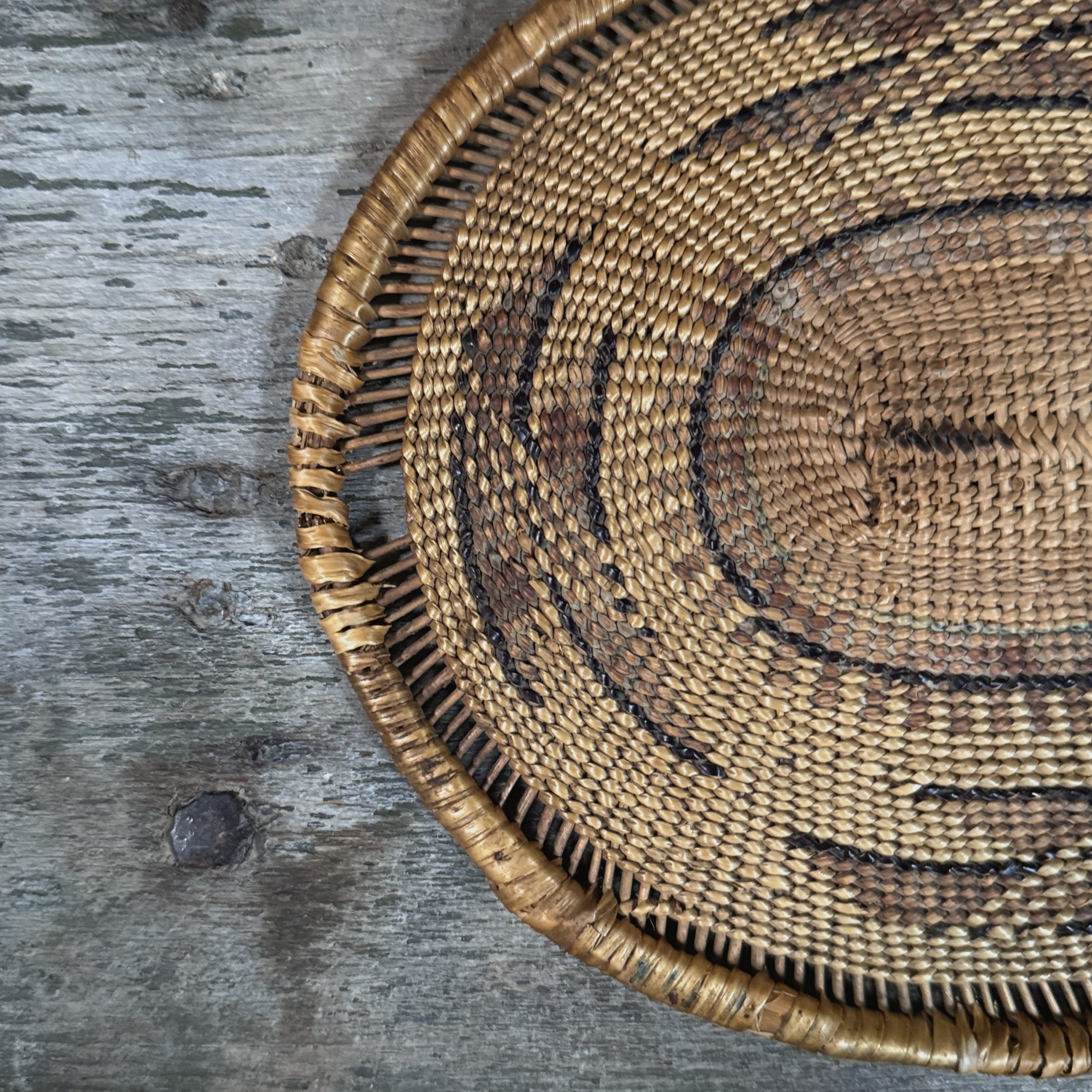 Image 1 of 5
Image 1 of 5

 Image 2 of 5
Image 2 of 5

 Image 3 of 5
Image 3 of 5

 Image 4 of 5
Image 4 of 5

 Image 5 of 5
Image 5 of 5






Antique Hupa Woven Oval Tray, c. 1920
Antique Hupa Woven Oval Tray, c. 1920
Size: 8”L x 6.5”D
Hupa hand-woven flat tray. Beautiful zig zag pattern along the front of the tray with a diagonal pattern running through it (most likely to represent rain). In good condition with wear consistent with age. Please refer to photos for details.
Crafted by master weavers of the Hupa (Natinixwe) tribe from Northwestern California, these hand-woven trays represent both practical tools and sacred art forms. Traditionally used in ceremonies and daily life, Hupa trays showcase:
Materials: Woven from spruce root and bear grass, with black designs from maidenhair fern
Technique: Tight coiled construction, often with a three-rod foundation for durability
Iconic Designs: Geometric patterns like stepped diamonds, zigzags, and quail plumes, each carrying cultural meaning
Uses: Serving acorn bread, shelled nuts, or ceremonial offerings during dances and feasts
The finest examples feature perfect stitch consistency and balanced symmetry, reflecting the Hupa belief in harmony between utility and beauty. Today, contemporary weavers preserve these traditions while adapting designs for modern collectors.
Note: The watertight weave allows some trays to double as shallow bowls for food preparation
Antique Hupa Woven Oval Tray, c. 1920
Size: 8”L x 6.5”D
Hupa hand-woven flat tray. Beautiful zig zag pattern along the front of the tray with a diagonal pattern running through it (most likely to represent rain). In good condition with wear consistent with age. Please refer to photos for details.
Crafted by master weavers of the Hupa (Natinixwe) tribe from Northwestern California, these hand-woven trays represent both practical tools and sacred art forms. Traditionally used in ceremonies and daily life, Hupa trays showcase:
Materials: Woven from spruce root and bear grass, with black designs from maidenhair fern
Technique: Tight coiled construction, often with a three-rod foundation for durability
Iconic Designs: Geometric patterns like stepped diamonds, zigzags, and quail plumes, each carrying cultural meaning
Uses: Serving acorn bread, shelled nuts, or ceremonial offerings during dances and feasts
The finest examples feature perfect stitch consistency and balanced symmetry, reflecting the Hupa belief in harmony between utility and beauty. Today, contemporary weavers preserve these traditions while adapting designs for modern collectors.
Note: The watertight weave allows some trays to double as shallow bowls for food preparation
